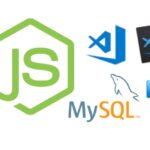![600+ Spring Interview Questions Practice Test [2024]](https://studybullet.com/wp-content/uploads/2024/01/5742462_f8f0_2.jpg)
Spring Interview Questions and Solutions Preparation Follow Check | Freshers to Skilled | Detailed Explanations
What you’ll be taught
Deep Understanding of Spring Framework Ideas
Proficiency in Spring Framework Finest Practices
Enhanced Downside-Fixing Expertise in Spring-Primarily based Eventualities
Preparation for Technical Interviews in Spring Improvement
Description
Spring Interview Questions and Solutions Preparation Follow Check | Freshers to Skilled | [Updated 2024]
Embark in your journey to mastering the Spring Framework with our complete observe take a look at course on Udemy! Designed meticulously for each budding and skilled builders, this course provides a singular alternative to organize for difficult interviews and improve your Spring data via intensive observe assessments. With a concentrate on real-world purposes and industry-relevant situations, our course covers all of the important elements of the Spring Framework, making you interview-ready and assured in your abilities.
- Spring Framework Fundamentals
- Overview of Spring Framework: Perceive the core ideas and structure of the Spring Framework, setting a robust basis for the remainder of the course.
- Beans in Spring: Delve into Spring Beans, their lifecycle, and their function in dependency injection.
- Spring Configuration and ApplicationContext: Study configuring Spring purposes and the pivotal function of ApplicationContext.
- Dependency Injection and Inversion of Management: Grasp these key ideas that kind the spine of the Spring Framework.
- Spring Bean Scopes: Discover the varied bean scopes out there in Spring and their use circumstances.
- Annotations in Spring: Perceive how annotations simplify configuration and logic implementation in Spring.
- Spring Core Applied sciences
- The Spring IoC Container: Become familiar with the Inversion of Management container and its significance in Spring.
- Spring AOP (Facet-Oriented Programming): Learn the way AOP addresses cross-cutting issues in a Spring software.
- Knowledge Validation and Conversion: Perceive the mechanisms for validating and changing knowledge in Spring purposes.
- Spring Occasions: Discover the occasion dealing with mechanism within the Spring Framework.
- Useful resource Administration in Spring: Study concerning the environment friendly administration of assets like beans, database connections, and so forth.
- Spring Expression Language (SpEL): Uncover the highly effective expression language for manipulating and querying object graphs at runtime.
- Knowledge Entry with Spring
- Spring Knowledge Entry Overview: Acquire insights into Spring’s knowledge entry philosophy and integration with varied knowledge sources.
- JDBC with Spring: Learn the way Spring simplifies the usage of JDBC with template courses.
- Transactions Administration in Spring: Grasp the ideas of transaction administration in Spring for dependable knowledge operations.
- Spring Knowledge JPA: Discover the mixing of Spring with JPA for object-relational mapping.
- Integrating Spring with Hibernate: Perceive the best way to leverage Hibernate inside the Spring Framework.
- Spring Knowledge Repositories: Delve into the Spring Knowledge Repository abstraction for knowledge entry layers.
- Spring Internet Applied sciences
- Spring Internet MVC Framework: Get a radical understanding of Spring’s internet MVC framework for constructing internet purposes.
- RESTful Internet Providers with Spring: Study to create RESTful providers utilizing Spring.
- Spring Safety: Discover the strong safety framework supplied by Spring for safe purposes.
- WebSockets in Spring: Perceive the best way to implement real-time communication in your purposes with Spring WebSockets.
- Spring WebFlux: Dive into reactive programming with Spring and deal with non-blocking knowledge streams.
- Error Dealing with in Spring MVC: Study greatest practices for dealing with exceptions and errors in Spring internet purposes.
- Spring Boot
- Introduction to Spring Boot: Uncover the simplicity and energy of Spring Boot for fast software improvement.
- Auto-Configuration in Spring Boot: Perceive how Spring Boot simplifies software configuration.
- Spring Boot Starters: Get to know the ready-to-use configurations for varied Spring modules.
- Creating RESTful Providers with Spring Boot: Study to effortlessly create RESTful internet providers with Spring Boot.
- Spring Boot Actuator: Discover the options of Spring Boot Actuator for monitoring and managing your software.
- Testing in Spring Boot: Acquire data about testing Spring Boot purposes effectively.
- Superior Spring Subjects
- Microservices with Spring Cloud: Step into the world of microservices with Spring Cloud and discover ways to construct scalable techniques.
- Spring Batch Processing: Perceive the best way to carry out batch processing in a Spring software.
- Spring Integration: Study integrating varied techniques and applied sciences with Spring.
- Reactive Programming with Spring: Delve into the reactive programming paradigm utilizing Spring.
- Spring Kafka Integration: Discover the best way to combine Kafka with Spring for dealing with message streams.
- Spring Caching: Study caching mechanisms in Spring to enhance software efficiency.
Recurrently Up to date Inquiries to Hold You Present
One of many standout options of our Spring Framework observe take a look at course is our dedication to holding the content material contemporary and related. We perceive that the expertise panorama is continually evolving, and staying up to date is essential for fulfillment. Subsequently, we usually replace our query financial institution to replicate the most recent developments, practices, and updates within the Spring Framework. This ensures that you just’re all the time making ready with essentially the most present info, supplying you with an edge in your interview preparation.
Pattern Follow Check Questions
- What’s the main objective of the Spring BeanFactory?
- A) To generate beans dynamically
- B) To handle the lifecycle of beans
- C) To combine beans with exterior frameworks
- D) To offer backward compatibility
Appropriate Reply: B) To handle the lifecycle of beans
Rationalization: The BeanFactory is a sophisticated configuration mechanism able to managing any sort of object. The first accountability of the BeanFactory is to configure, create, and handle beans. This entails instantiating beans, wiring them collectively, configuring them, and managing their full lifecycle. The BeanFactory offers the muse for the Spring Framework’s Dependency Injection performance. It’s a complicated implementation of the manufacturing facility sample. Whereas choice A appears viable, it’s not the first objective. Choices C and D usually are not direct duties of the BeanFactory.
- Which of the next is true about Spring’s @Autowired annotation?
- A) It will probably solely be utilized to constructor arguments.
- B) It’s used for dependency injection.
- C) It requires express bean definition in XML.
- D) It solely works with primitive knowledge sorts.
Appropriate Reply: B) It’s used for dependency injection
Rationalization: The @Autowired annotation in Spring is used for automated dependency injection. It marks a constructor, subject, setter technique, or config technique as to be autowired by Spring’s dependency injection amenities. This annotation permits Spring to resolve and inject collaborating beans into your bean. Whereas it’s generally used with fields and constructors, it’s not restricted to them, making choice A incorrect. Possibility C is wrong as @Autowired works with each XML configuration and Java-based configuration, and it’s not restricted to both. Possibility D can also be incorrect as a result of @Autowired works with a wide range of object sorts, not simply primitives.
- What’s the significance of the @Transactional annotation in Spring?
- A) It offers a mechanism for knowledge caching.
- B) It signifies {that a} technique or class must be transactional.
- C) It’s used for sort conversion.
- D) It’s used for validating technique enter.
Appropriate Reply: B) It signifies {that a} technique or class must be transactional
Rationalization: The @Transactional annotation in Spring is used to declare transactional semantics for a selected technique or class. When a way annotated with @Transactional is executed, Spring dynamically creates a proxy that manages the transaction lifecycle. This entails starting and committing a transaction earlier than and after the annotated technique is invoked. Choices A, C, and D, whereas related to different elements of Spring, don’t describe the aim of the @Transactional annotation.
- In Spring MVC, what function does the DispatcherServlet play?
- A) It acts as a entrance controller.
- B) It serves as a template resolver.
- C) It’s used for exception dealing with.
- D) It manages safety and authentication.
Appropriate Reply: A) It acts as a entrance controller
Rationalization: Within the Spring MVC framework, the DispatcherServlet performs the function of a entrance controller. It’s a central servlet that manages the stream of the Spring MVC software. All incoming requests undergo the DispatcherServlet, which then routes these requests to numerous controllers based mostly on the URL mappings. It’s the core of the Spring Internet MVC framework and handles the orchestration of request processing, view decision, locale, time zone decision, and far more. Whereas it does play a task in exception dealing with, choice C will not be its main operate, and choices B and D describe duties that aren’t dealt with by the DispatcherServlet.
- Which characteristic does Spring Boot present to simplify software configuration?
- A) XML-based configuration
- B) Onerous-coded configurations in code
- C) Auto-configuration
- D) Guide bean registration
Appropriate Reply: C) Auto-configuration
Rationalization: Spring Boot offers a characteristic referred to as auto-configuration, designed to simplify the method of organising and configuring a Spring software. Auto-configuration makes an attempt to routinely configure your Spring software based mostly on the jar dependencies that you’ve got added. As an illustration, if HSQLDB is in your classpath, and you haven’t manually configured any database connection beans, then Spring Boot will auto-configure an in-memory database. The intention is to cut back the quantity of handbook configuration required. XML-based configuration (choice A) is a characteristic of Spring however not particularly a simplification supplied by Spring Boot. Choices B and D describe approaches which are opposite to the philosophy of Spring Boot, which emphasizes conference over configuration and seeks to reduce handbook setup.
Every query is designed to check particular data areas inside the Spring Framework and is accompanied by an in depth rationalization. This method not solely helps you put together for interviews but in addition deepens your understanding of Spring’s core ideas and functionalities.
Enroll Now and Ace Your Spring Interviews!
Be a part of us on this complete journey to beat the Spring Framework. With our expertly crafted observe assessments and detailed explanations, you’ll be nicely in your strategy to interview success {and professional} development on the earth of Spring improvement.
Content material
The publish 600+ Spring Interview Questions Follow Check appeared first on destinforeverything.com/cms.
Please Wait 10 Sec After Clicking the "Enroll For Free" button.








